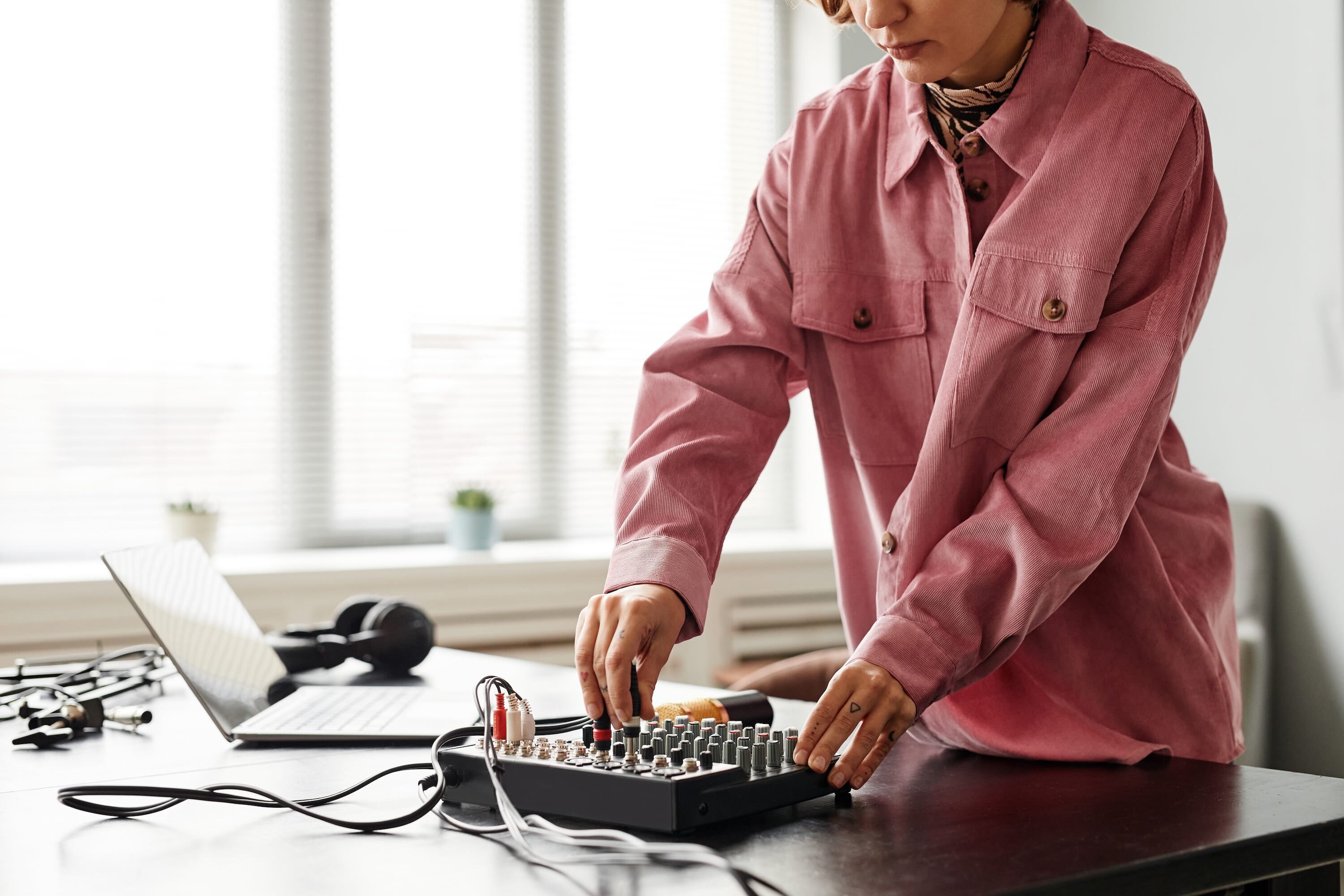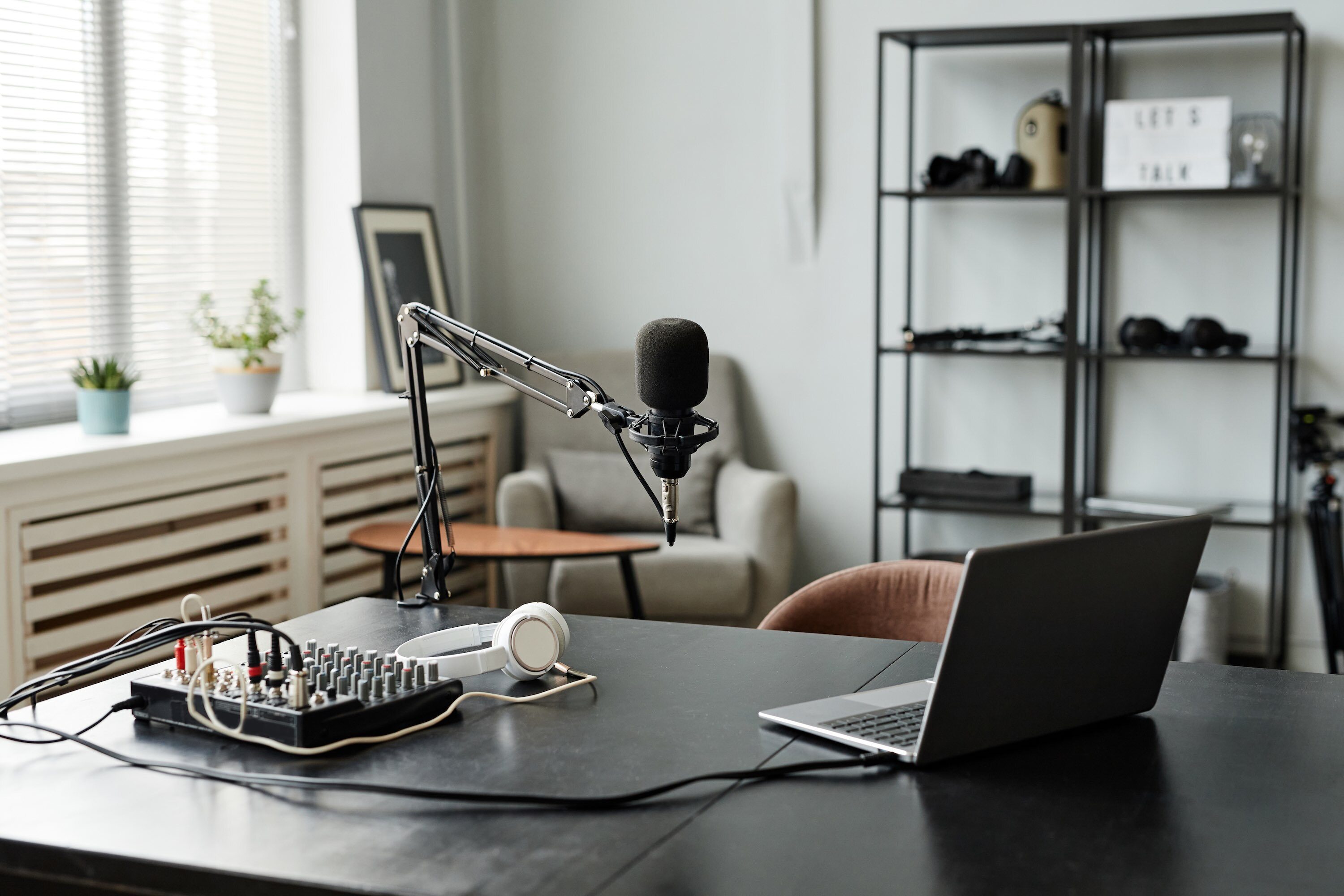Need advice? Let's talk.
Get straightforward guidance from your broadcasting partner. Schedule a call to chat with the team about your radio station.
Book DemoFree Radio-Automation Tools: Get Your Station Running for $0
You don’t need a five-figure studio to sound like a pro. With the right radio-automation tools, you can schedule shows, auto-DJ through the night, and still sleep.

You’ve got the passion, the playlists, maybe even a mic, but what about the tools to run a radio station without dropping a ton of cash? That’s where radio automation comes in. With the right free software, you can schedule shows, auto-play music through the night, and keep your station sounding sharp 24/7: no team, studio, or problem.
This guide breaks down the best free radio-automation tools and how to pair them with Radio.co to get your station on the air, and keep it there.
What are Radio Automation Tools?
Radio-automation tools are software platforms that handle the day-to-day chores of running a station: loading music, lining up IDs and ads, smoothly transitioning between tracks, and firing off shows at the exact second you scheduled them. Think of them as the station manager who never sleeps. They:
Schedule and playout audio – build hourly clocks, rotations, or one-off playlists and let the computer hit Play at 03:00 while you’re elsewhere.
Cross-fade and level-match – smooth transitions and consistent volume without manual tweaking.Insert imaging, ads, and news bulletins – automatically drop in stingers or sponsored spots at pre-set times.
Voice-track remotely – record links from home, upload, and let the software slot them between songs as if you were live.
Log everything – keep track of spins for royalties and compliance.
In short, automation tools keep the station on air 24/7, free you from babysitting the console, and let small teams sound like big ones.

5 Benefits of Radio Automation Tools
1. Reliability
Once your playlists, IDs, and ad blocks are scheduled, the software hits every cue on time. No sick days, no “dead air,” and no last-second fumbles because someone overslept. If your internet hiccups or a live DJ drops, the system fades in a backup playlist so listeners never notice. Most tools also log every track and trigger, giving proof of play for royalties or advertisers. Bottom line: automation keeps your station sounding polished and professional, even when you’re miles away or fast asleep.
2. Time-saving
Manual playout means sitting in front of the mixer hour after hour, loading tracks, firing liners, and watching the clock. Automation flips that workflow on its head. Record your voice-links, build a rotation, and let the software do the grunt work. Many operators schedule a week of shows in a single afternoon, freeing time for content research, guest booking, or actual sleep. Smart features like drag-and-drop scheduling, auto-leveling, and reusable clocks mean you set it once and reuse it forever.
3. Professional sound
Nobody enjoys a song that suddenly blasts louder than the last one or ends with an awkward gap of silence. Let automation sort that out. It evens out volume, fades tracks in and out, and lines everything up so the flow feels seamless. You can park your station IDs, jingles, or sponsor spots on simple on-screen buttons, and the software will trigger them right on time — no manual clicks required. Built-in sound polish makes a bedroom setup feel like a pro studio.
4. Remote operation
Modern automation lives in the cloud or syncs easily over the internet, meaning you can run a show anywhere. Record voice tracks on a phone, upload them to the scheduler, and the software slots them between songs at the timestamp you choose. Guest DJs can connect from another country, do a live set, and hand the reins back to AutoDJ without a hitch. Traveling? Log in, swap out a playlist, and check listener stats from a café Wi-Fi. Your station moves with you instead of chaining you to the studio.
5. Scalable
Automation grows as you grow. You can start with a single playlist and basic imaging; add specialty shows, sponsorship breaks, and day-parted rotations as your audience expands. Most systems let you create user roles, so new presenters can upload tracks or voice-track without touching critical settings. You can drop in dynamic ad insertion or scheduled sponsor spots if you want to monetize.
6 Free Radio-Automation Tools Worth Testing
(all $0, Windows unless noted; each integrates with Radio.co via Icecast/SHOUTcast encoder or direct stream URL)
Tool | OS / Hosting | Stand-Out Features | How to Hook Into Radio.co |
RadioDJ | Windows desktop | Rotation rules, event scheduler, database-driven library | Install free AltaCast ⇒ point encoder to your Radio.co mount URL |
Mixxx | Windows / macOS / Linux | Live decks + Auto DJ, built-in streaming, time-stretching | Enter Radio.co host, port, and password in Mixxx’s Stream Settings |
PlayIt Live | Windows desktop | Drag-and-drop carts, voice-tracking, and a segue editor | Use internal encoder or BUTT to stream to Radio.co |
PlayoutOne Standard | Windows | Free tier of a pro suite: clocks, segue editor, car wall, voice-tracking | Enable its Icecast encoder → enter Radio.co credentials |
AzuraCast | Self-hosted (Linux / Docker) | Web UI, cloud Auto DJ, multi-DJ roles | Relay AzuraCast’s Icecast/SHOUTcast URL into Radio.co for analytics |
LibreTime | Self-hosted (Linux VPS) | Calendar scheduler, remote live break-ins, and show recording | Add LibreTime’s stream URL as an “external source” in Radio.co |
1. RadioDJ
RadioDJ is a free Windows program that lets you run a radio station from your laptop. Import your music, drag songs into playlists, and set the clock — RadioDJ handles the rest while you sleep or work. It balances volumes, fades tracks smoothly, and can even drop station IDs or quick sponsor messages at times you choose.
Create simple “bins” for brand-new songs, listener favourites, and classics, then tell RadioDJ how often each group should play. The software is stable, widely used, and has a friendly support forum, making it a solid first step for anyone new to radio automation.
2. Mixx
Think of Mixx as two virtual turntables plus an “Auto DJ” button. Load your songs, hit Auto DJ, and Mixxx keeps the music flowing with smooth fades and matched tempos. When you want to jump in live, just drop a track on Deck A or B, cue it with your headphones, and start mixing.
You get waveform views, hot cues, loops, and a microphone channel for quick talk breaks. It’s perfect if you want hands-on mixing sometimes, but need the software to run the show when you step away.
3. PlayIt Live
If dragging songs around feels more natural than building databases, PlayIt Live is for you. The interface is pure drag-and-drop: load tracks, build a clock, and watch them play out with nice on-screen meters. With one click, the cart wall fires jingles or ads, and the segue editor lets you tighten every transition.
Want remote guests? Add the free Remote Voice-Tracking plugin so presenters can drop links in from anywhere.
4. PlayoutOne Standard
PlayoutONE Standard is a Windows automation suite that feels friendly from the first click. Drag songs into hour clocks, drop those clocks onto a weekly grid, and the software plays every track, jingle, and voice-track right on time. A cart wall lets you fire quick jingles or ads with one tap, while the segue editor shows overlapping waveforms so you can tighten each transition visually.
The free tier keeps core features, like clocks, voice-tracking, and library search, wide open with no time limits or watermarks. If you ever outgrow it, paid upgrades add cloud backup and remote control, but many hobby stations run happily on the Standard edition alone.
5. AzuraCast
AzuraCast is a free, self-hosted radio automation tool that runs on a computer or cloud server and stays on 24/7 because it’s the system streaming your station in real time. The software is free, but you’ll need to run it on a spare computer at home or rent a small VPS (virtual private server) for a few dollars a month.
Once installed, everything runs in your browser. You can upload music, build playlists, schedule shows on a calendar, and let the built-in AutoDJ take over when no one’s live. It supports live broadcasting, multiple user logins, and listener stats.
6. LibreTime
LibreTime works the same way — the software is free, but you’ll need a computer or VPS that stays on 24/7 to keep your station running.
Once it’s set up, everything is controlled through your browser. You can upload audio, build a show calendar, automate playback, and even record live broadcasts for replay. It’s a solid choice if you want hands-off scheduling, recurring programs, or multiple hosts working remotely. Setup takes a little more effort than desktop apps, but once it’s running, LibreTime gives you a lot of flexibility and control.

Need More Muscle? Two Paid Upgrades
NextKast
Ready to level up from “hobby” to “pro” without earning a broadcast degree? NextKast gives you beefier rotation rules, slick audio processing, and built-in voice-tracking that feels almost too easy. Drag your songs into categories (new, hit, classic), and set how often each should play. NextKast juggles them so your playlist never gets stale. A loudness processor evens volume so all tracks hit at the same level, and the built-in recorder lets you grab live shows for replays. It isn’t free, but the 14-day trial lets you road-test everything before you decide.
SAM Broadcaster PRO
This one’s the granddaddy of commercial radio software and is still going strong. SAM Broadcaster PRO packs a clock-based scheduler, drag-and-drop playlist windows, real-time audio meters, plus a complete DSP chain (compressor, AGC, limiter) to give your stream that “FM polish.”
You can set up separate rotations for dayparts, like morning hits, afternoon talk, overnight chill, and SAM will switch automatically. Built-in reporting handles royalty logs, and ad break scheduling is as easy as ticking a box. It’s not cheap, but SAM still delivers if you want an all-in-one studio you can grow into for years.
How to Pair Automation with Radio.co
Radio automation tools handle the behind-the-scenes stuff like building playlists, scheduling shows, voice-tracking, and playing your content 24/7. But they need a way to get that audio out into the world. That’s where Radio.co comes in.
Think of Radio.co as your broadcast tower in the cloud. Connect your automation software (like RadioDJ, Mixxx, or PlayoutONE) to Radio.co using a built-in or external encoder. Once it’s linked, everything your software plays gets streamed live through Radio.co. There is no need to manage servers, worry about uptime, or handle listener bandwidth.
When you’re not live, Radio.co’s built-in AutoDJ takes over. Many automation tools have their own AutoDJ but rely on your computer or server staying online. Radio.co’s AutoDJ lives in the cloud, so your stream keeps going even if your internet drops, your laptop crashes, or your automation software disconnects.
This setup gives you the best of both worlds:
Full control and flexibility from your favorite automation tool
Rock-solid cloud streaming, scheduling, and listener analytics from Radio.co
Whether you're broadcasting from home, a laptop on the go, or a desktop playout system, Radio.co fills in the gaps and makes your station sound seamless 24/7.
Ready to Automate Without the Overhead?
You don’t need expensive software or a full studio setup to run a great-sounding station. With the right free radio-automation tools and a reliable platform like Radio.co to handle your streaming, you can build a station that runs 24/7 on your terms, and within your budget.
Start simple, experiment with what fits your workflow, and let automation do the heavy lifting so you can focus on creating great content.



